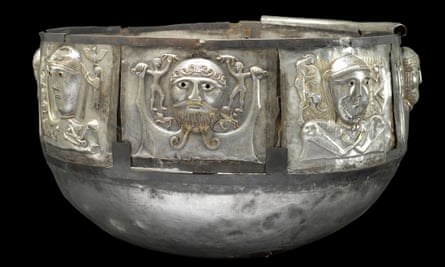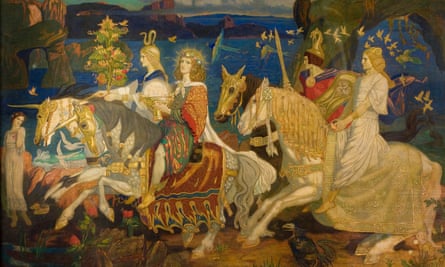Celts – Art and Identity is a great exhibition that achieves the opposite of what it intends. In wall texts and a richly detailed catalogue it sets out a sceptical approach to the ancient peoples of north-western Europe. Celts, we’re told, never called themselves Celts and modern constructions of a genetic and eternal Celtic identity – promoted by Scottish, Welsh and Irish nationalists – are as insubstantial as mist on a loch.
Yet I have never seen such a stupendous display of Celtic art. There is a total disconnect between seeing the abstract swirls and golden curling torcs, tangled crosses and spiralling shield bosses that fill this exhibition so wondrously and reading the captions that insist on the absence of a single Celtic identity.
In the end I just ignored the texts and succumbed to the art. The Celts may never have existed, but their art is amazing.
Some of the greatest abstract art ever made was created in iron age Europe. The peoples the Greeks and Romans encountered were intricate workers of circles within circles, horned helmets, hidden faces, magic boxes.

I can’t see nearly as much regional variation as the curators claim. Instead I see an exotic refinement of curves and symmetries that triumphs over time and space. Celtic art is an aesthetic of unique, enduring power, deeply rooted in the prehistoric past and still potent today.
Why does a bronze shield boss (the shield’s bulging centrepiece) that was chucked into the river Thames in about 300-200 BC look so strangely modern in its flowing plant-like stems? Partly, as the final section of this exhibition lucidly expounds, because the Celtic revival in the 19th century appropriated these abstract forms for modern art.
A poster for the Glasgow Institute of Fine Arts, made in about 1894, reveals how luxuriantly the lines of ancient Celtic art entwine with the elegance of Art Nouveau. A Charles Rennie Mackintosh chair would fit in here just as well. The crafty conundrums of iron age art are a druidic pattern book out of which modernity has conjured the abstract.
Of course it was not an abstraction for the ancient peoples. The swirls signified something, the serpentine lines of beauty were meaningful. But meaning was more elusive in the pre-literate world of northern Europe than it was for the literate Romans who conquered it. When the Romans came, they wrote down the gods’ names: Epona, the horse goddess, Artio, the divine bear. They also put up “realistic” classical figures of these enigmatic beings. But long before that, in about 400-300BC, a German tribe erected a statue of a being with slits for eyes and a rough-hewn column for a body, a remote and even sinister deity.
That alienness persists into Christian times. The Romans came and went but Celtic art endured. Irish priests were great pioneers of Christianity in the dark ages (their fastness on Skellig Michael is now a Jedi training school) and Celtic crosses loom up like primitive totems in this exhibition’s spookiest room.
The cross, the most familiar religious symbol of the west, has never looked so totemic and bizarre. On stone crosses from Scotland – real examples and replicas – the unmistakable abstract entanglements of Celtic art create monstrous undernotes to the Christian symbol. Pagan echoes. The cross emerges from a magical, demonic world.

We’re in the eerie cosmos of the Book of Kells, although you need to visit Trinity College Dublin to see that. Spiral galaxies and knotted multiverses fill the coloured pages of early Irish illuminated manuscripts.
This does not seem evidence of discontinuity so much as a golden braid connecting modern Europe and the prehistoric past. What secret memory drove 17th- and 18th-century Scottish Highlanders to put Celtic whorls on their circular shields?
I love this exhibition even though I am unconvinced by its thesis. It comes to bury the Celts but ends up resurrecting them, in all their misty splendour.
Celts – Art and Identity is at the British Museum in London from 24 September until 31 January
